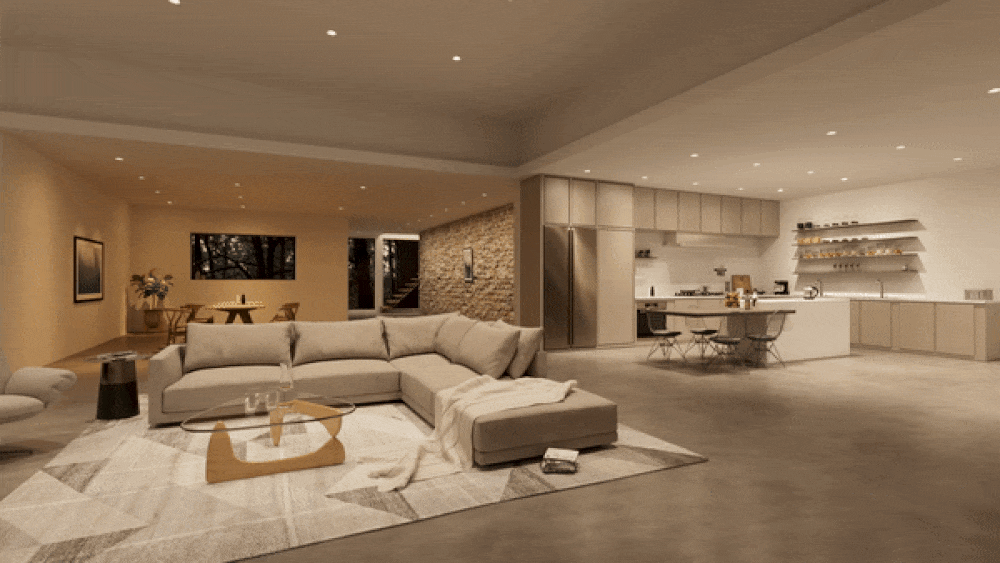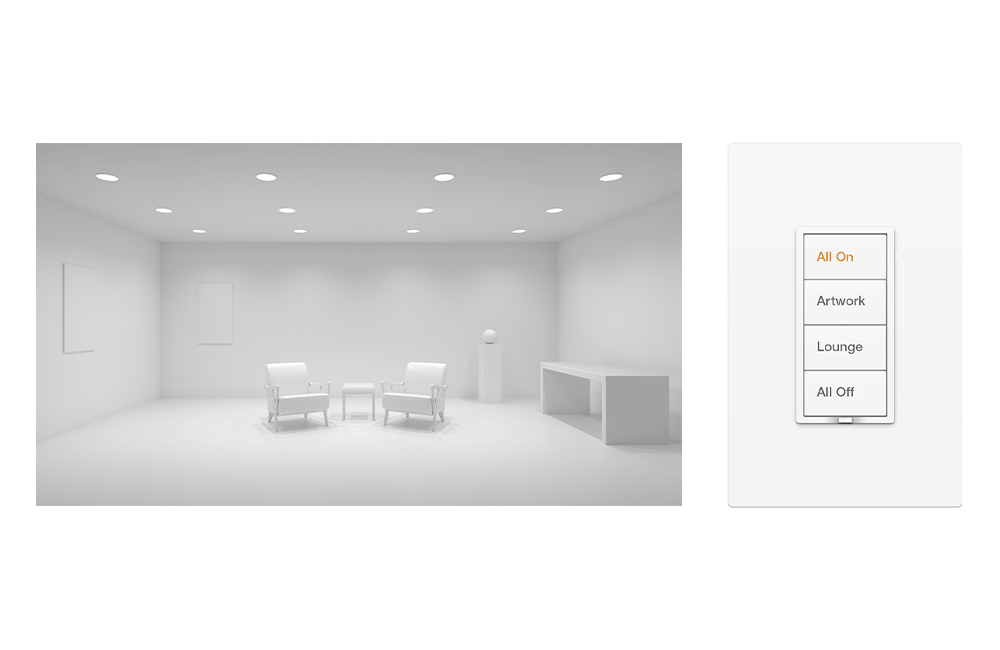Over the past few years we have added more and more lighting to our homes. One room may incorporate sconces, recessed cans, art spots, cove lighting, lamps…you get the idea. People spend a lot of design time and money getting the lighting just right in their homes. Then they control them with twenty switches!

Advantages of a Home Lighting System
Focus on Interior Design:
Lighting control gets rid of all the bulky banks of light switches on the wall. In their place is a clean, easy to control keypad or panel. Now, the focus is on the art hanging on your wall and not the mass of light switches.
One of the favorite things about lighting control is how it shows off your home. Lighting scenes are designed to highlight the your architectural and interior design elements. By dimming lights to varying degrees, you can create scenes and moods that beautify your home. With regular switches, you would have to walk into each room and turn on multiple switches, adjusting dim levels as you go. With lighting control, a scene can be instantly called up with the press of a button. Any combination of lights you want in or outside the house at any combination of dim levels you can imagine.
Focus on Increased Security:
When your security alarm goes off, your house can automatically light up inside and out. Burglars like the dark and the element of surprise. They’ll be the ones getting the surprise and attention will immediately be drawn to your house.
Focus on Convenience:
As you approach your driveway, turn on your exterior lights with the touch of a button in your car. Open the garage door and illuminate the hallway from your garage to your kitchen. When it’s time to go to bed, no need to trek around turning off lights, just press the “goodnight” on your bedside touchscreen to set a “nighttime” mode throughout your home.
Can I put lighting control in an existing home?
Absolutely. Your existing light switches can be replaced by Lutron switches that provide control from keypads, iPads and smart phones. These products do not require extra wiring as they communicate to the central processor using radio frequency (RF) transmission.

